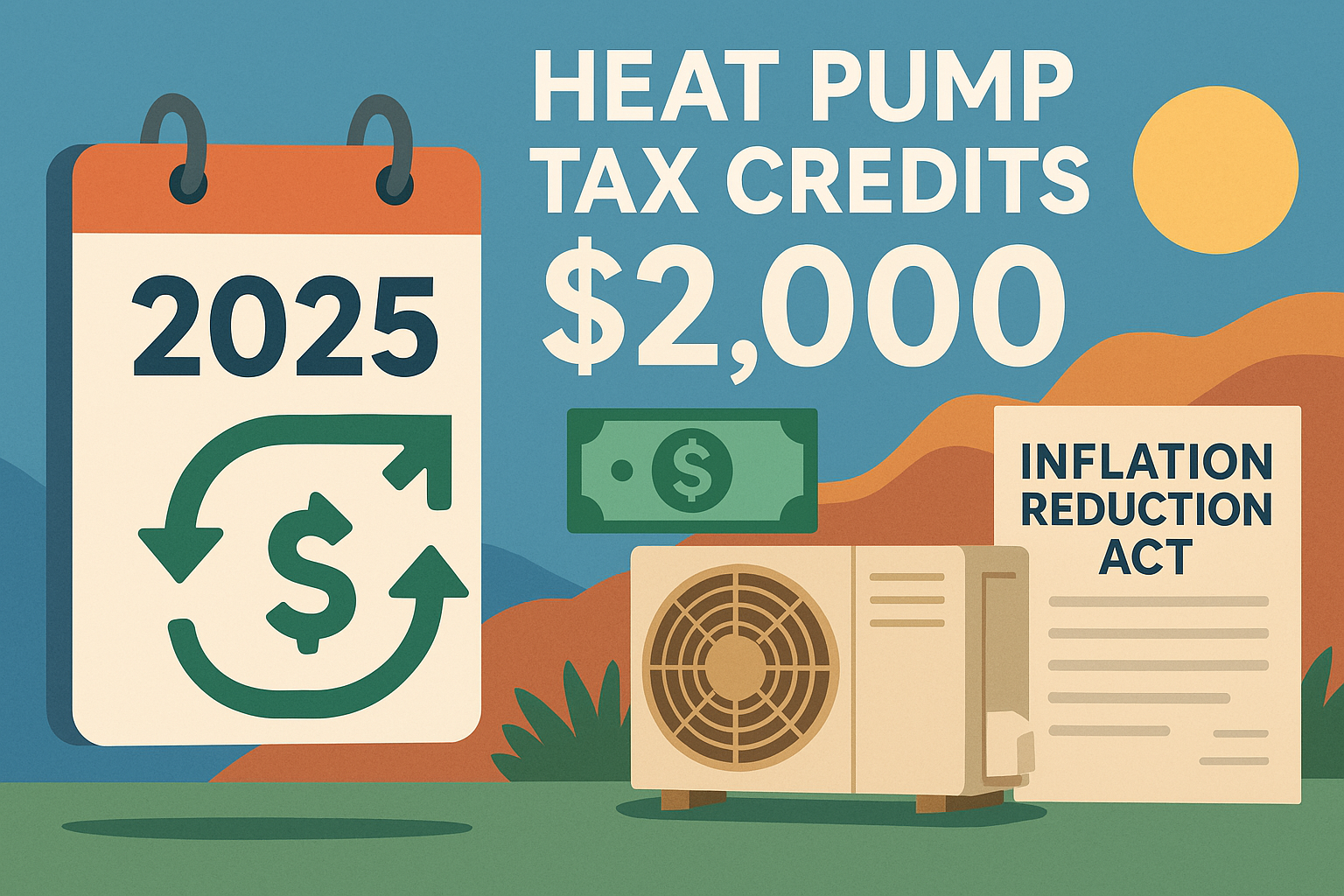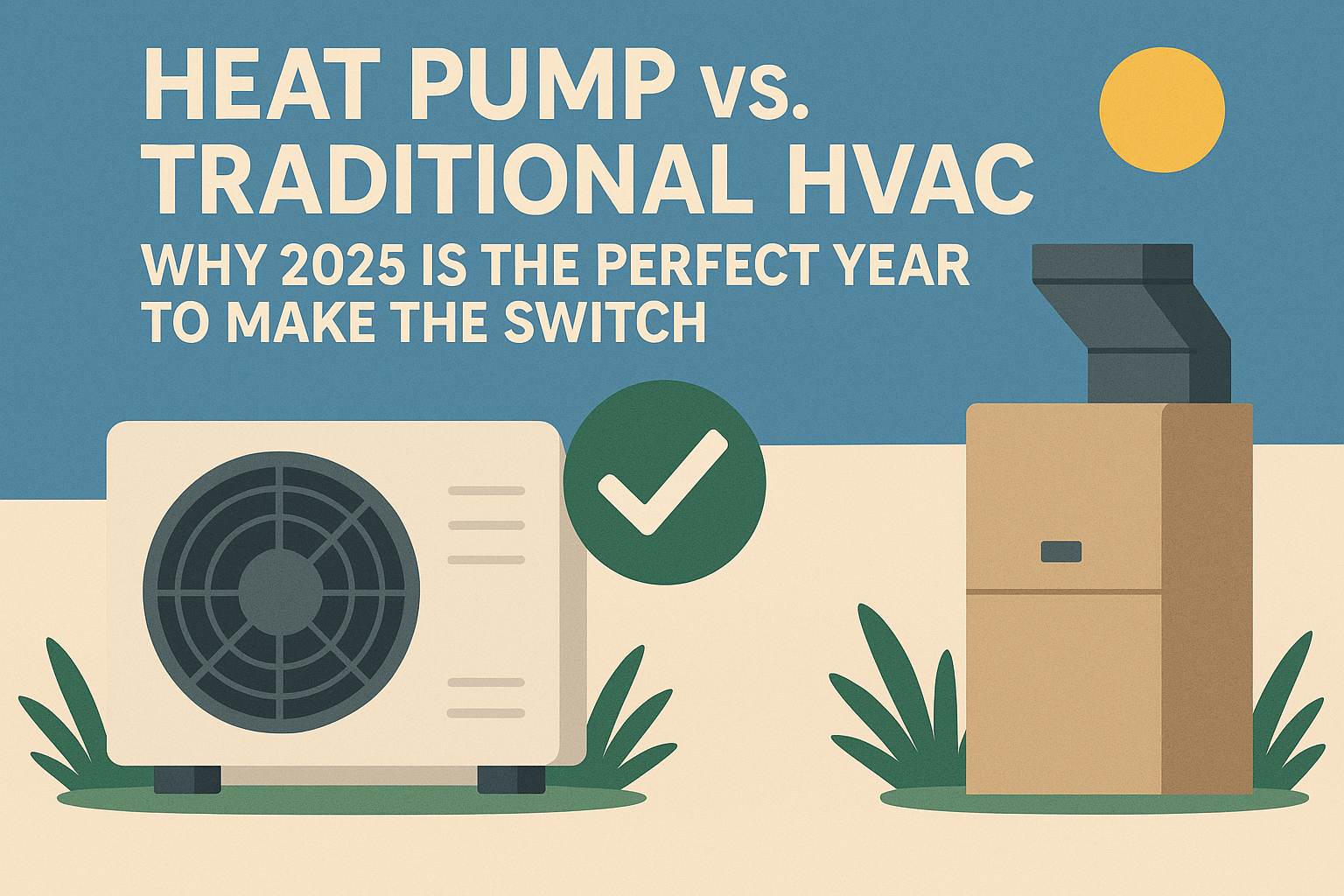2025 Heat Pump Tax Credits: How to Save $2,000 with the Inflation Reduction Act
Are you considering upgrading your home's heating and cooling system in 2025? If so, you're in luck. The Inflation Reduction Act (IRA) offers substantial tax credits for energy-efficient home improvements, including heat pumps. This comprehensive guide will walk you through everything you need to know about qualifying for and claiming the $2,000 heat pump tax credit in 2025.
What Are the 2025 Heat Pump Tax Credits?
The Energy Efficient Home Improvement Credit (Section 25C) provides homeowners with a tax credit of up to 30% of the costs for eligible heat pump installations, capped at $2,000. This federal tax credit is part of the broader Inflation Reduction Act, which aims to promote energy efficiency and reduce carbon emissions across the United States.
Unlike previous years' energy efficiency tax credits, the IRA has significantly expanded both the amount and scope of these incentives. The credit is available for purchases and installations from January 1, 2023, through December 31, 2032, giving homeowners a decade-long window to take advantage of these savings.
Key Features of the 2025 Heat Pump Tax Credit:
- Credit amount: 30% of project costs, up to $2,000
- Duration: Available through December 31, 2032
- Annual availability: No lifetime dollar limit – you can claim the maximum credit every year for eligible improvements
- Credit type: Nonrefundable tax credit (reduces the amount of tax you owe)
- Overall limit: Total efficiency tax credit limit in one year is $3,200 ($2,000 for heat pumps + $1,200 for other improvements)
New Requirements for 2025
Starting January 1, 2025, the requirements for qualifying heat pumps are becoming more stringent. Here's what you need to know about the new criteria:
ENERGY STAR Most Efficient Designation
Air source heat pumps must be recognized as ENERGY STAR Most Efficient to qualify for the tax credit in 2025. This designation is given to products that deliver cutting-edge energy efficiency along with the latest in technological innovation.
Two Qualification Pathways
There are two ways your heat pump can qualify:
- Heating-dominated applications (cold climates): Heat pumps designated as ENERGY STAR Cold Climate
- Cooling-dominated and dual-fuel applications: For example, a heat pump paired with a furnace
Product Identification Number (PIN) Requirement
Beginning in 2025, qualifying products must be produced by a qualified manufacturer and include a PIN for tax return reporting. When you claim the credit for a heat pump, you'll need to include the PIN from the outdoor unit on your tax return.
This new requirement helps ensure that only truly qualifying products receive the tax credit and reduces the potential for fraud.
Who Qualifies for the Heat Pump Tax Credit?
The heat pump tax credit is available to a wide range of homeowners and even some renters. Here's who qualifies:
- Homeowners with primary residences in the United States
- Second home owners (the credit applies to any home you use as a residence)
- Renters who make eligible improvements with the property owner's permission
However, landlords making improvements to rental properties they don't use as a residence are not eligible for this particular tax credit.
What Types of Heat Pumps Qualify?
To qualify for the tax credit, your heat pump must meet specific efficiency standards:
- Must meet or exceed the highest efficiency tier established by the Consortium for Energy Efficiency (CEE)
- Starting in 2025, must be recognized as ENERGY STAR Most Efficient
- Must be installed according to manufacturer specifications and applicable local codes
Both ducted and ductless mini-split heat pumps can qualify, as long as they meet the efficiency requirements.
How to Calculate Your Heat Pump Tax Credit
Calculating your potential tax credit is straightforward:
- Add up all eligible costs: This includes the cost of the heat pump equipment and installation labor
- Multiply by 30%: Calculate 30% of your total eligible costs
- Apply the cap: If your calculated amount exceeds $2,000, your credit is limited to $2,000
Example Calculation:
- Heat pump equipment: $8,000
- Installation labor: $2,000
- Total eligible costs: $10,000
- 30% of eligible costs: $3,000
- Applied cap: $2,000 (since 30% of costs exceeds the cap)
Remember that you must subtract any rebates, utility subsidies, or other financial incentives from the cost of the item before calculating your tax credit.
Additional Rebate Programs to Combine with Tax Credits
In addition to the federal tax credit, you may be eligible for other rebate programs that can further reduce the cost of your heat pump installation:
Home Electrification and Appliance Rebates (HEAR)
- Low-income households (up to 80% of area median income): Eligible for 100% rebate up to $8,000
- Moderate-income households (80-150% of area median income): Eligible for 50% rebate up to $8,000
Home Energy Rebate (HER) Program
- Whole home solutions with energy reduction of 35% may be eligible for rebates up to $8,000
State and Utility Rebates
Many states and utility companies offer additional rebates for heat pump installations. These can often be combined with federal tax credits to maximize your savings.
Important Limitations to Keep in Mind
While the heat pump tax credit offers significant savings, there are some limitations to be aware of:
- Non-refundable credit: You can't get back more than you paid in federal income taxes
- No double-dipping: HEAR and HER grant funds cannot be used for the same measure within any home
- Proper documentation: You must keep receipts and manufacturer certifications to verify your claim
How to Claim Your Heat Pump Tax Credit
To claim your heat pump tax credit on your 2025 tax return (filed in 2026), you'll need to:
- Keep detailed records: Save all receipts, invoices, and manufacturer certifications
- Obtain the PIN: Make sure you have the Product Identification Number from your heat pump's outdoor unit
- Complete IRS Form 5695: Fill out the Residential Energy Credits form
- Transfer the credit amount: Add the credit to your Form 1040
Real Impact: Heat Pump Tax Credits in Action
According to the IRS, in 2024, more than $2 billion in credits were claimed for energy-efficient home improvements by 2.3 million families, averaging $880 per family. With the increased credit amounts and expanded eligibility under the IRA, even more homeowners are expected to benefit in 2025.
Finding Qualifying Heat Pumps
Major manufacturers like Mitsubishi Electric, Carrier, Lennox, and others provide lists of qualifying products for the IRA federal tax credit. When shopping for a heat pump:
- Ask for ENERGY STAR Most Efficient models: Specifically request models that will qualify for the 2025 tax credit
- Verify the PIN: Ensure the model comes with the required Product Identification Number
- Work with knowledgeable contractors: Choose installers familiar with IRA tax credit requirements
Conclusion
The 2025 heat pump tax credit offers a significant opportunity to upgrade your home's heating and cooling system while saving money and reducing your environmental impact. By understanding the requirements, calculating your potential savings, and combining with other available rebates, you can maximize the financial benefits of switching to an energy-efficient heat pump.
Remember that tax laws can change, so it's always a good idea to consult with a tax professional before making major purchasing decisions based on tax incentives.
FAQs About the 2025 Heat Pump Tax Credit
Q: Can I claim the heat pump tax credit if I've claimed it in previous years? A: Yes. Unlike previous energy efficiency tax credits, there is no lifetime limit. You can claim up to $2,000 each year for qualifying heat pump installations.
Q: Do I need to itemize deductions to claim the heat pump tax credit? A: No. The energy efficiency tax credit is available whether you take the standard deduction or itemize.
Q: What documentation do I need to keep for the tax credit? A: Keep all receipts and invoices for the purchase and installation, manufacturer certifications stating the product qualifies, and the Product Identification Number (PIN).
Q: Can I claim the credit for a heat pump in a newly constructed home? A: Generally, the credit applies to improvements in existing homes. However, if you, as the homeowner (not the builder), purchase and install qualifying components, you may be eligible.
Q: How does the heat pump tax credit affect my tax return? A: The credit directly reduces the amount of tax you owe, dollar for dollar. If you owe $3,000 in taxes and qualify for a $2,000 credit, you'll only owe $1,000.
Disclaimer: This article is for informational purposes only and does not constitute tax advice. Please consult with a qualified tax professional regarding your specific circumstances.

